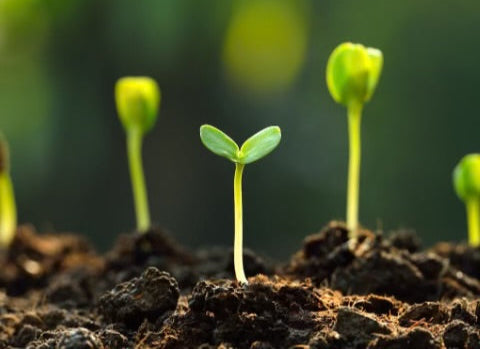Sustainable Growing Practices
Collapsible content

Organic Farming
Organic farming works in harmony with nature. Organic farmers grow food without using synthetic fertilizers, pesticides or GMOs - this means they have to use other methods to fight pests, disease and weeds.
Healthy Soil: a great first line of defense is to keep the soil healthy and full of nutrients - healthy soil grows strong plants which are more resistant to pests and bugs.
Insect Repellent Plants: certain herbs and flowers, such as basil and marigolds, naturally keep bugs away as they do not like the smell or taste.
Crop Rotation
Crop rotation is the practice of growing different crops in the same area over multiple growing seasons.
Plants each need their own specific combination of nutrients to grow big and strong. If they grow in the same spot year after year, the soil begins to run out of these specific nutrients.
By changing which crop you have in that location each growing season, you can prevent soil from becoming depleted of nutrients.
Crop rotation also improves water use efficiency - since the soil is so fertile and full of organic matter, it can hold more water and moisture in it for the plants to use.
Urban Agriculture
Urban agriculture comes in a variety of forms, from backyard/community gardens and rooftop green spaces, to indoor hydroponics and land near cities that is fully dedicated to farming, such as the Kerber's School Farm. The practice takes unused spaces and turns them into areas that can provide food and clean air.
Most of the food we eat has to travel hundreds, if not thousands, of miles to get to our kitchen tables. Processing, transporting and packaging these foods takes time and resources and adds to the carbon footprint of the food we eat. By practicing urban agriculture and sourcing our food locally, we can help cities reduce problems related to pollution and climate change - and enjoy fresher food!
Animal Integration
Animal integration is a practice that involves raising livestock and growing crops in the same space. It can improve soil health by adding nutrients, increase biodiversity, reduce greenhouse gas emissions, and increase farm resilience overall. It can also help control pests and weeds, and provide new sources of food as is the case with the eggs our chickens lay.
We have a number of animals that live on our farm and help complete our farm ecosystem - you can learn more about them here!
